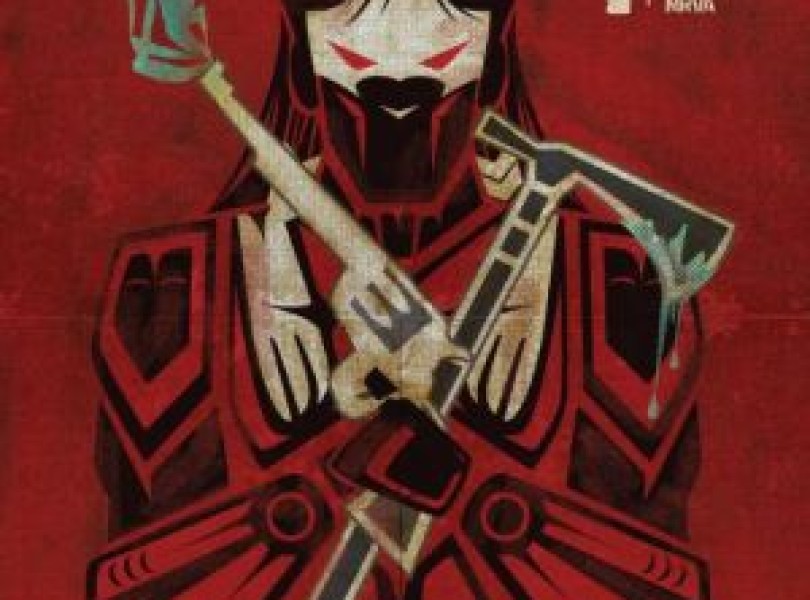Red Wolf keeps the peace in the town of Timely.
For all the controversy surrounding Red Wolf when it was originally announced, it’s disappointing that the actual comic is fairly unremarkable. The art and the portrayal of the title character are both solid, but with the lack of a compelling conflict or supporting cast, there’s not much to distinguish this series in the All-New, All-Different Marvel lineup.
This first issue picks up loosely where the Secret Wars tie-in 1872 left off, with the Sheriff Red Wolf trying to keep the uppity citizens of Timely in line. There’s plenty of the expected racial tension. Not unlike the Mark Waid/J.G. Jones mini-series Strange Fruit, the book suffers from the fact that the supporting cast is little more than a sea of generic, interchangeable, violently racist townspeople. Half the fun of 1872 was seeing familiar Marvel heroes and villains given the Wild West makeover. That element is downplayed to the point where it almost seems like Marvel wants to give the impression this book is taking place in the past rather than an alternate reality.
This issue gives readers nothing to latch onto apart from Red Wolf and his mother. Red Wolf himself is a likable character. He’d be right at home among the X-Men in the sense that he strives to protect a world that hates and fears him. Much was made of the fact that cover artist Jeffrey Veregge was also brought on board to lend input on the series’ depiction of Native Americans. How much influence he may have had is unclear. But if nothing else, Red Wolf is written as a very practical character, one more interested in carrying out his duties and protecting his mother than dabbling in the stereotypical mystical trappings of your average pop culture Native American hero.

Dalibor Talajic fits right in with the book’s 19th Century Wild West setting. His line-work is simple but elegant, rendering the dusty environment of Timely and the chaos of a rioting crowd and stampeding cows with ease. Colorist Miroslav Mrva makes the most of this setting, focusing on brown, earthy tones and warm lighting. Both Talajic and Mrva ensure that the environments are as much a focus as the characters, which isn’t something you always find in modern superhero comics.
Unfortunately, there’s just not much to hook readers in this first issue. The plot is sparse and the supporting characters bland. This issue doesn’t get around to addressing the core conceit of the series until the final page. That at least gives hope things will improve in the second chapter, but it also forces the reader to wonder what the point of this first issue was in the first place. Why not open the series where the story gets interesting?
Red Wolf isn’t a bad comic, but compared to many new Marvel releases it’s a pretty dull and uneventful one. The strong characterization of the lead hero and the attractive visuals don’t entirely make up for the dull supporting cast and conflict. The series has the chance to turn its prospects around thanks to the twist at the end of this issue, but maybe it should have been a little quicker in getting to that point.



